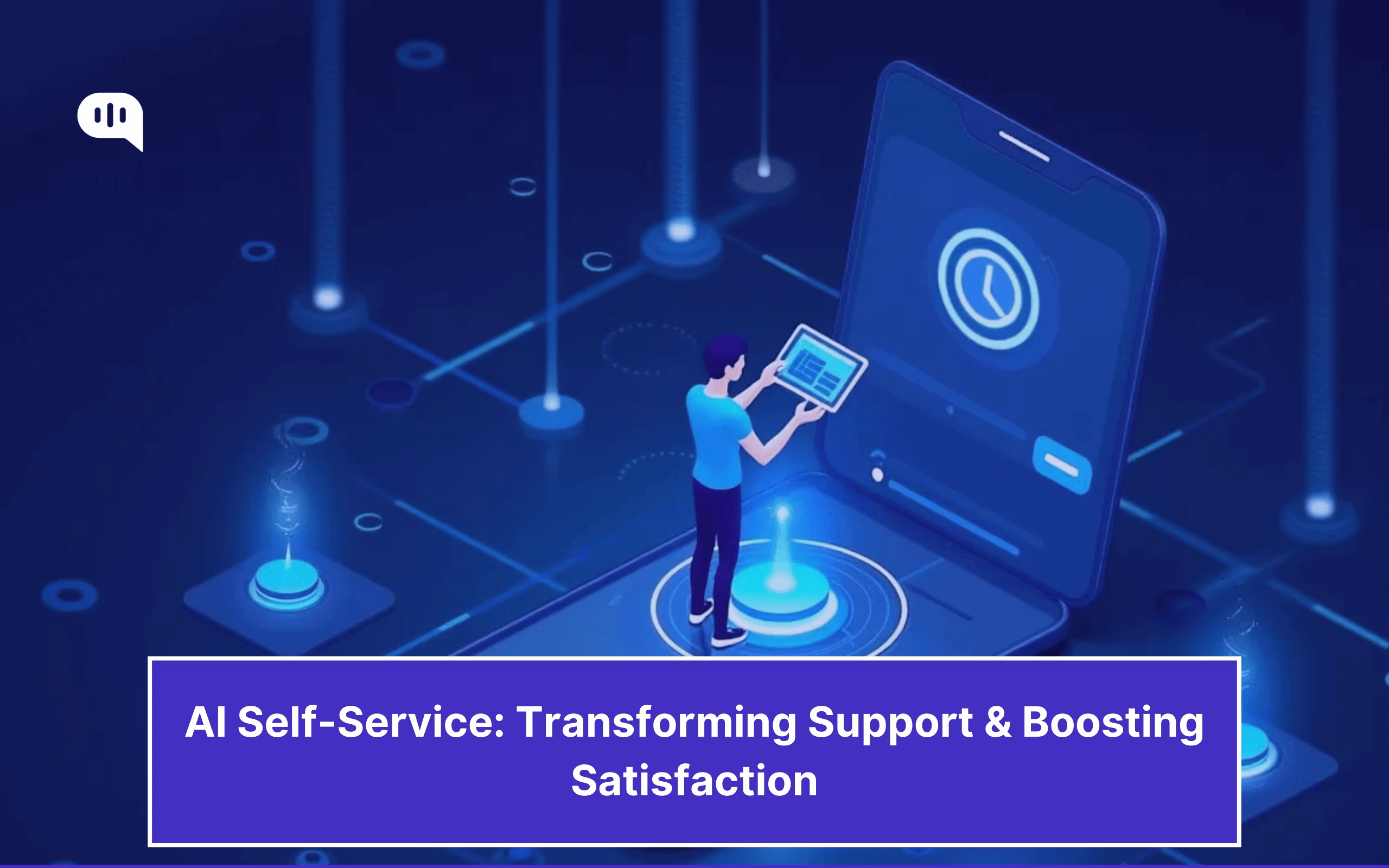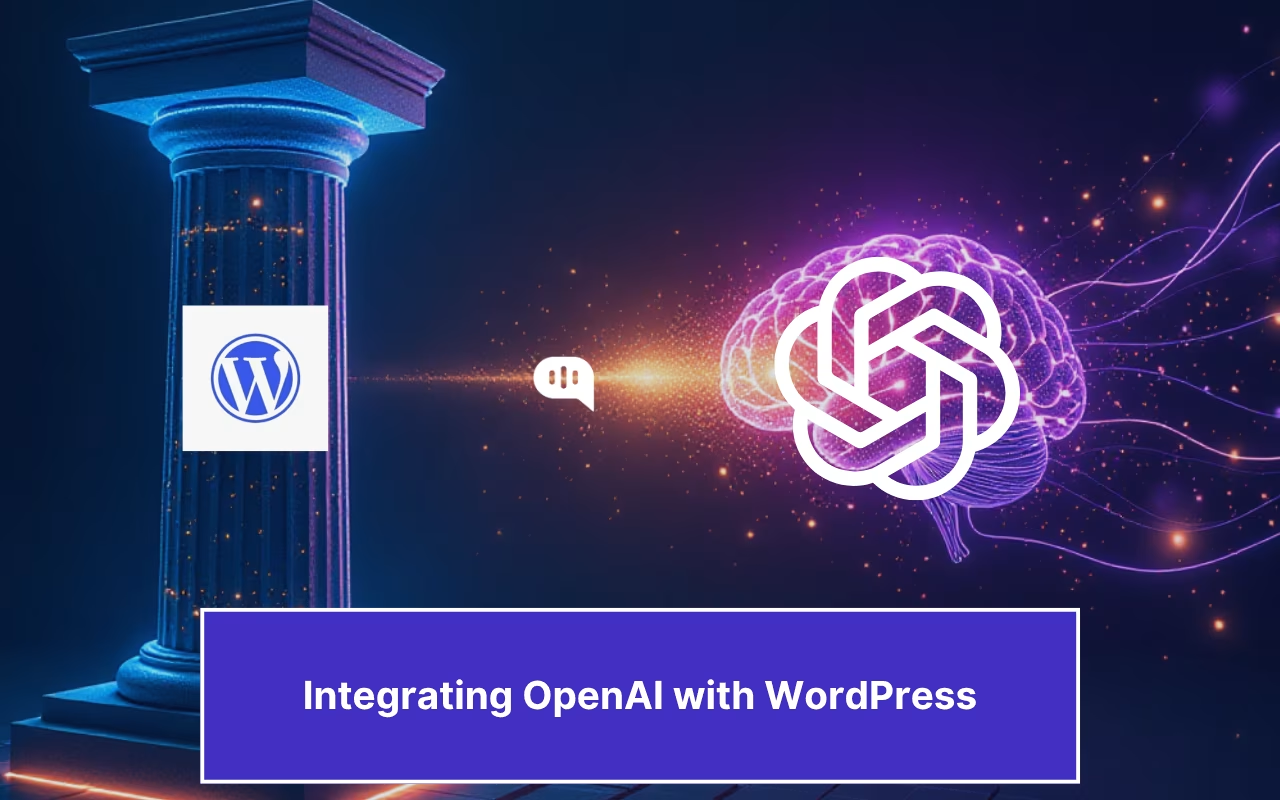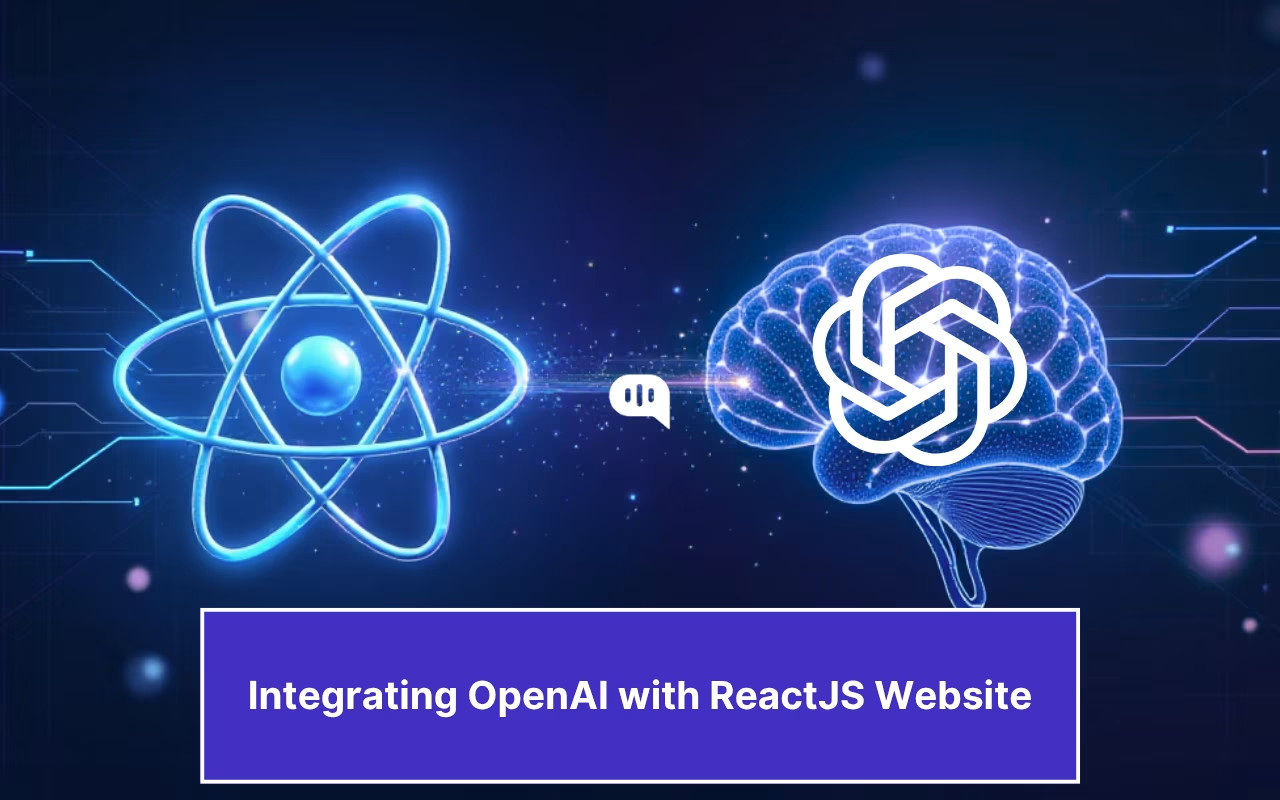Updated on February 21, 2025

Long wait times, multiple transfers, and poor availability cause friction in your customer service experience, leading to frustration and low satisfaction. AI self-service steps in to remove these pain points, streamlining and automating customer support.
For you, this means reduced operational costs, enhanced scalability, and more productive agents. And for customers, it delivers faster, more convenient, and more consistent support at every stage of the buying journey.
So, exactly what is self-service AI? What are the benefits of automating customer services, and which tools should you consider?
What is AI Self-Service?
AI self-service refers to customer service tools powered by artificial intelligence technologies designed to automate customer service interactions. In other words, they let customers access support without needing to contact a human customer service agent.
AI-powered customer service automation platforms use technologies like natural language processing (NLP), machine learning, and deep learning to analyze and understand human language, search intent, sentiments, and more, enabling rich self-service capabilities.
For example, a customer can use an AI chatbot to resolve a minor issue or find the answer to a query. They could also search AI-powered knowledge bases for product information or use a virtual assistant to help them navigate the purchasing process.
What Are the Key Benefits of Implementing AI Self-Service?
Companies are using AI in business to reap significant benefits — operational efficiency, cost-savings, and enhanced analytics, just to name a few. But what about the benefits of integrating AI self-service into customer support experiences?
Reduces Operational Costs Through Automated Processes
Customer services have high operational costs, which only increase when there’s a surge in demand. Sourcing, hiring, and training new employees is expensive, timely, and disruptive to operational processes — but AI self-service can help.
When you automate customer service, you can support more customers simultaneously via centralized AI platforms. So, you can operate at larger scales at a lower cost, optimizing resources, agent productivity, and, in turn, costs.
Provides 24/7 Availability for Continuous Customer Support
AI systems don’t need time to rest and recuperate, which means they can answer common questions and perform basic tasks on a 24/7 basis. This is crucial in a globally connected world where customers demand immediacy and convenience, regardless of their timezone.
This can be backed up by a HubSpot survey in which customers named responsiveness (61%) and availability (55%) as two of the most important customer service standards.

Providing 24/7 customer service demonstrates that you value your customers, fostering loyalty and driving retention.
Achieves Faster Resolution Times for Customer Queries
Customer support automation allows customers to swiftly resolve queries around the clock without waiting for human intervention. But if they do need to contact an agent, they can still enjoy shorter wait times and faster resolutions thanks to AI.
AI self-service relieves agents of routine tasks. It frees up ticket and call queues so that agents can provide quicker resolutions to customers with complex questions.
Plus, should a ticket need to be escalated to an agent, AI will provide the agent with all the contextual details they need to accelerate resolutions.

Enables Scalability to Handle Growing Customer Demands
Customers want fast, convenient, and consistent support across multiple channels — and companies are under pressure to deliver. Instead of having to hire additional employees, office space, and resources, businesses are turning to AI.
AI solutions are inherently scalable. A customer experience chatbot, for example, has the potential to handle millions of customer interactions simultaneously. In the face of unexpected traffic surges or peak periods, AI can be on hand to shoulder the volume.
Ensures Consistency Across All Service Interactions
Unlike humans, AI systems aren’t prone to errors caused by emotions, bias, fatigue, distractions, and inexperience. Being unaffected by these extenuating factors allows them to deliver accurate, consistent responses across all service interactions.
Popular AI Self-Service Tools for Enhancing Customer Support
As technology advances, AI self-service tools are becoming more abundant. Here are five of the most popular tools to consider:
Chatbots
An AI-powered customer service chatbot is a widely used tool that can handle all sorts of customer support tasks — answering FAQs, checking order statuses, escalating issues, and more.

Unlike rule-based chatbots, AI chatbots can adapt to language changes, interpret open-ended conversations, understand customer sentiments and behaviors, and give content-rich responses with a natural, human-like flow. They can also be integrated across digital channels, from your website to your mobile apps and instant messaging platforms.
Virtual Assistants
AI-powered virtual assistants tackle complex tasks across the entire customer journey. As well as answering questions, they can make proactive product recommendations, schedule appointments, troubleshoot technical issues, track orders, and more. They can also understand both text and voice commands, helping customer conversations flow more naturally.
Automated IVR Systems
Contact centers use automated interactive voice response (IVR) systems to streamline telephone support experiences. These systems navigate inbound callers through a series of menu options via voice or keypad and intelligently route them to the right department based on their inputs.
Equipped with AI, an IVR system can also answer basic FAQs, schedule callbacks, and provide information like account balances or order statuses.
Knowledge Bases With AI
Knowledge bases are comprehensive, centralized information libraries that support customers from discovery to post-purchase. It’s home to everything from FAQs and help articles to how-to videos, troubleshooting guides, and other relevant brand information.
Knowledge bases enriched with AI-powered search empower customers to find what they’re looking for more efficiently. AI algorithms can understand the intent behind customers’ search queries, automatically edit and update information, and make proactive content suggestions. This ensures that customers receive the most accurate, up-to-date support on demand.
Self-Service Portals
A self-service customer portal is an online hub that enables customers to meet a wide range of needs themselves. Not only can they access your knowledge base, but they can manage and update their account details, schedule appointments, view order histories, and perform a host of other tasks at their convenience — all without needing to contact an agent.

Best Practices for AI Self-Service to Enhance Customer Satisfaction
If you decide to take the leap and implement AI self-service, there are some best practices you should follow to maximize customer satisfaction.
Analyze Customer Needs to Tailor AI Solutions
To ensure that customers find value in your AI solutions, you need to understand exactly what type of AI self-service your customers need.
This means delving deep into customer pain points, preferences, and behaviors, leveraging support ticket data, surveys, and customer feedback to identify customer service gaps and common issues.
Using actionable insights, you can prioritize AI self-service solutions and align their implementation with the real, pressing needs of your customers.
Choose AI Technology That Fits Your Goals
Defining your goals and choosing AI technologies that help you meet them is crucial to enhancing the value of your solutions.
Let’s say your goal is to achieve faster resolution times. Here, an automated IVR system would help guide callers to the right department, minimizing wait times and transfers, and leading to faster issue resolutions.
Alternatively, if your goal is to improve customer satisfaction, you might prioritize customer support chatbots that can answer common queries on a 24/7 basis and request in-chat feedback via customer satisfaction (CSAT) surveys.
Design User-Friendly And Intuitive AI Interfaces
A clunky, complex AI interface adds extra pain points to user experiences, reducing value and satisfaction. This is why you should take extra care to design AI interfaces that are intuitive and user-friendly.
Design clear, simple navigation paths that guide users straight to the answers they need. Integrate NLP and machine learning into chatbots to make conversations feel natural and increase the relevancy of answers. These features eliminate roadblocks in your customer experience, resulting in better experiences.
Consider using cloud-managed Kubernetes to streamline the management of your AI applications, empowering you to concentrate on creating customer-focused solutions.
Provide Accurate And Up-To-Date Information
If the information provided by your AI self-service is outdated or inaccurate, you can expect lots of angry calls from rightfully frustrated customers. So, continuously update your chatbots, knowledge bases, and self-service portals with the most relevant, up-to-date information, periodically checking for any inaccuracies.
Ensure Smooth Human Escalation When Needed
Of all the reasons that customers are wary of AI, the inability to reach a human agent is their top concern according to 60% of respondents who took part in a Gartner study.

Complex queries and issues require intuitive decision-making and emotional intelligence — things that AI can’t replicate. If AI can’t resolve a query, the customer should be smoothly escalated to a human agent without having to switch apps or jump through additional hoops.
Along with continuing to provide human customer service as a frontline solution, train AI to understand which queries should be escalated and when. You should also train human agents in how to handle escalated queries efficiently.
Remember, in the battle of AI chatbot vs. live agent, there is no direct winner. Chatbots are there to complement and empower live agents — not replace them.

Protect Customer Data and Ensure Privacy
Data security and privacy are also pressing customer concerns. According to the same Gartner survey that we mentioned above, 34% believe that their data will be less secure if businesses use AI within customer service.
Make safeguarding sensitive customer data a priority by implementing robust security measures like encryption, data governance, regular audits, and compliance with data privacy regulations. Communicate your cybersecurity measures to customers and make it clear how AI uses their data.
You should also use the most up-to-date operating systems, platforms, and software. For example, for businesses using CentOS, CentOS end of support exposes your business applications to cyberattacks, putting your customers’ data at serious risk.
So, if you’re using CentOS, it’s time to consider taking evaluation steps, such as risk assessments and downtime analysis, and planning a smooth migration that doesn’t disrupt your operations.

Continuously Train and Support The AI System
Just like human agents, AI systems require regular training and support to ensure that they continue to meet evolving customer needs. Monitor AI self-service performance by tracking CSAT scores and collecting feedback, diving into the data to identify areas for improvement.
Don’t forget to update AI systems with relevant, up-to-date information, and hone the intelligence of your chatbots to enrich conversations with naturalness, simplicity, and personalization.
Key Takeaways
By implementing customer experience automation, companies maximize the availability and consistency of support experiences to amplify customer satisfaction. From chatbots and virtual assistants to IVR, there is a range of technologies you can integrate to create great self-service experiences.
Start by identifying your goals and the right AI self-service solutions for you. From there, build self-service tools with intuitive interfaces packed with accurate, up-to-date information, taking care to protect customer privacy and perform continuous updates.

CEO & Co-Founder of Kommunicate, with 15+ years of experience in building exceptional AI and chat-based products. Believes the future is human + bot working together and complementing each other.





